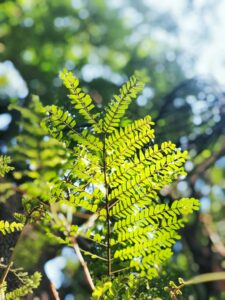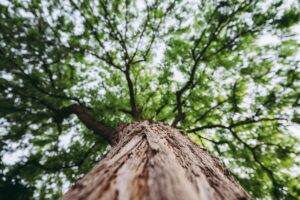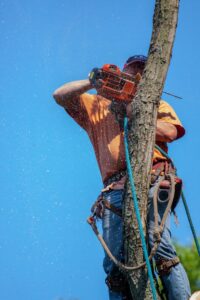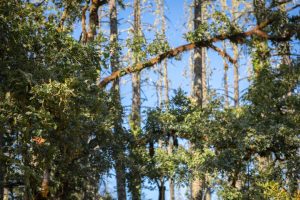Tree Services In Snyderville Utah

Tree Services In Snyderville Utah
If you’re looking for the best tree trimming company in Snyderville, you’ve come to the right place. Snyderville Extermination provides full tree pruning and shrub trimming services to customers throughout Snyderville, Utah, and the surrounding area.
You may not think much about your trees until you need tree branch removal after a storm, but the truth is, the more attention you pay to your trees, the easier it will be to take care of them and keep them healthy.
Arranging for tree pruning service on a regular basis helps keep your trees free of deadwood. This makes the tree healthier, but it also keeps your family and visitors safer. A branch or limb suddenly coming down on a windy day can cause serious injury.
A tree trimming service is also good for thinning out your trees. Too many branches crowded together makes it hard for them to reach the light. As they struggle, your tree may begin to lean precariously. Snyderville Extermination’s tree care services include thinning out branches and removing suckers from trunks, so your tree sends all of its resources to healthy, growing branches and limbs.
Shrub trimming is important as well, not just to keep your shrubbery looking attractive, but also to keep it healthy. All plants — especially shrubs and flowering shrubs — can benefit from regular pruning. It keeps your shrubs from getting scraggly and it promotes steady growth and better flowering.
For the best in tree trimming, tree pruning, shrub trimming and all types of tree services in Snyderville, call Snyderville Extermination.
Tree Trimming Cost in Snyderville, Utah
Tree trimming costs around $201.00 per hour for a 3-man crew (range $172.00 to $229.00 per hour). For 3-4 hours of work, the average cost of tree trimming is around $715 (range $520 to $910). These costs and prices vary depending on circumstances particular to your project, including: tree condition, tree height, proximity to power lines, and location. Location is an important factor. Areas with a higher cost of living will be at the higher end of the range.
How Much Does Tree Trimming Cost in Snyderville, UT?
This guide is intended to provide you an approximate average cost of tree trimming in your area. Since prices vary, we suggest that the best way to get an accurate cost estimate is to request a quote for your specific project: Click Here for a Free Estimate. Our research, which includes feedback provided by local tree services, resulted in the following prices to trim a tree in Snyderville, UT.
Tree trimming cost in Snyderville (3-person crew)
The average cost of tree trimming in Snyderville, Utah is around $201.00 per hour for a 3-person crew (range $172.00 to $229.00 per hour). Difficult projects involving multiple trees will cost more.
Tree trimming cost based on the number of hours using a 3-person crew :
1 hour of tree work costs: $172 to $229
2 hours of tree work costs: $344 to $458
3 hours of tree work costs: $516 to $687
4 hours of tree work costs: $688 to $916
5 hours of tree work costs: $860 to $1,145
6 hours of tree work costs: $1,032 to $1,374
7 hours of tree work costs: $1,204 to $1,603
8 hours of tree work costs: $1,376 to $1,832
Tree removal cost in Snyderville
The average cost to remove a tree in Snyderville, Utah is around $735 (range $270 to $1,200). Difficult projects can cost thousands more when multiple trees are involved, and the work takes a full day or two.
Factors that Influence Tree Trimming Costs in Snyderville
When a contractor comes to your house to provide you an estimate, they will consider several factors that can increase or decrease the cost of your project. Pricing for tree trimming can vary based on the accessibility and condition of the tree. The type of equipment needed can impact the cost as well. Here are a few things to keep in mind.
Your prices may be higher when:
You have a tall tree.
The tree is difficult to access.
The tree overhangs power lines.
A crane or bucket truck is required to trim the tree.
The tree is in a poor or fragile condition.
You are requesting an emergency service.
Your prices may be lower when:
You have a small tree.
You are requesting the service in the off season.
The tree is easy to access.
The tree has already fallen and is not on a structure.
The work can be done without a crane or bucket truck.
Price(less) Quotes from Tree Services Near Snyderville, UT
Total Tree Care Total Tree Care has successfully completed thousands of projects over the past 17 years. Notable clients include Utah State University, the LDS Church (meetinghouses, camps, and temples), Utah Department of Transportation, numerous construction companies, cities, HOAs, and hundreds of residential clients. In addition to performing high quality pruning, easy to extremely technical removals, and stump grinding we have been called on to a variety of unusual jobs such as cat rescue, antenna installation, bird house installation, tree house removal, and cutting logs for mushroom culture. There is always something to keep things interesting and challenging.
Strive to meet your tree care needs with honesty, integrity, and dependability. We accomplish even the most challenging jobs safely. We can remove any size tree in any location with minimal disturbance and no damage to your property. We are fully licensed and insured for your protection.
Ranger Tree And Landscapes Yard Ranger was established to help big and small customers around cache valley. We do and have done everything from a full service landscape maintenance for large HOA and multi-church contracts, to the smaller residential clients, we help once or twice a year to trim a tree or bush.
Low Cost, Same Day Tree Service in Snyderville, UT
Trees & Bees is the company you can count on whether you need one time trimming or ongoing tree service in Snyderville. Our Snyderville tree care partners use modern equipment, insured workers and offer competitive pricing. Trees are the most visible accent on your property and taking care of your trees will keep your entire yard looking great. If you put off getting a tree removed in Snyderville or ignore a tree with large branches hanging over power lines or property, you could end up with a hazard.
When high winds or storms hit, you will be glad you have a professional tree service company in Snyderville that has been looking out for you. Get started now and provide a few details about the types and number of trees on your property, any potential obstacles to accessing your trees and the team at Trees & Bees will get to work.
Comparing Snyderville Tree Trimming Costs To Help Customers Save
Snyderville Arborists
When you look for the cost of tree service in Snyderville with Trees & Bees, you know that there won’t be any extra fees or markups with our transparent pricing. Many Snyderville tree care companies will cut corners by not ensuring their employees or by hiding fees until the tree work is completed. Trees & Bees makes sure there is no bait and switch and our Snyderville experts have over two years of experience in the tree care field and can provide:
Same Day Emergency Tree Service in Snyderville
Yearly, Quarterly or Monthly Tree Trimming in Snyderville, Utah
Routine Tree Care in Snyderville, UT (inspections to check the overall health of your trees, look for diseased or damage that can affect nearby trees)
Do I need a permit to remove a tree in Snyderville?
If all or part of a tree is on Snyderville land then you will likely need a permit. Generally, homeowners who want to remove a tree in their own backyard or one that is under 10 feet tall do not need prior approval.. Removing larger trees in Snyderville can cause problems however, as they have larger and deeper roots that are more likely to impact utility or plumbing lines buried nearby. When in doubt, a Trees & Bees pro can help.
How can I get a lower price on tree service in Snyderville?
The most important factor for your yearly costs of tree service in Snyderville is the type of trees you have. Certain breeds of tree are more difficult to trim, prune and maintain (palm, willow, etc.) while some grow extremely fast and therefore require more frequent trimming (poplar, empress, willow, sycamore). Scheduling a yearly checkup on the health of your trees will also help you avoid diseases that can result in expensive removal and replacement of your trees.
How much of the tree work can I do on my own?
Most people in Snyderville take care of their trees while they are young, but at a certain point the tree height makes it difficult for the average homeowner. Handheld arborist tools will only get you so far, and using a ladder and winging it can be time consuming and potentially dangerous. Also note that Snyderville tree trimming is a bit of an art, especially with saplings. Shaping a tree properly during its growth is critical to ensure a beautiful tree years down the road and Trees & Bees are experts at shaping all breeds of tree.
How do I know which tree care company in Snyderville is best for me?
We get this question all the time, as it is difficult to tell the difference between Snyderville tree care companies without actually using them. You are already halfway there, as Trees & Bees partners in Snyderville are licensed and insured and have met our reputation standards for providing great service. We always recommend that you ask for specifics on how a company will service your trees, including equipment used (do they use bucket trucks or heavy equipment for large trees?), tree trimming methods used (make sure they do not use ‘topping’ or other aggressive approaches that can weaken a tree), and how many clients do they have in Snyderville? Asking these questions of Snyderville tree trimming companies should give you a good feel of the right fit for your trees.


